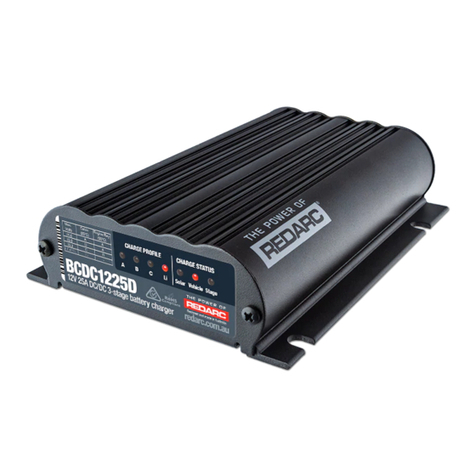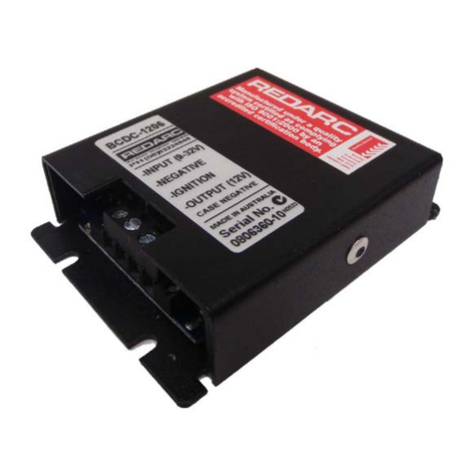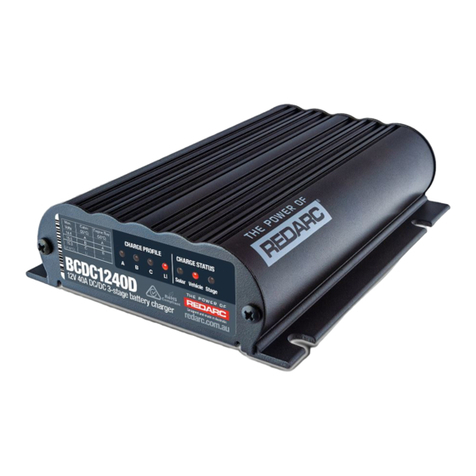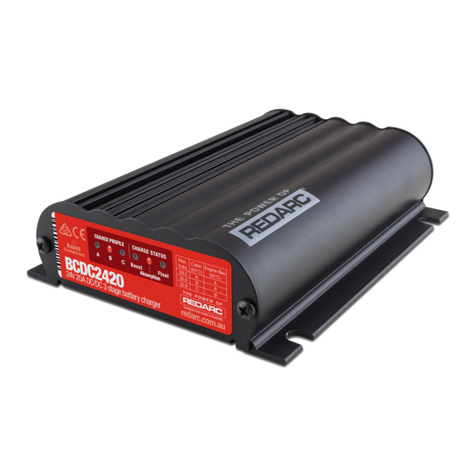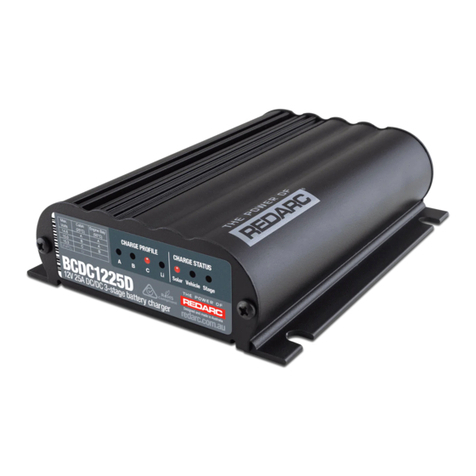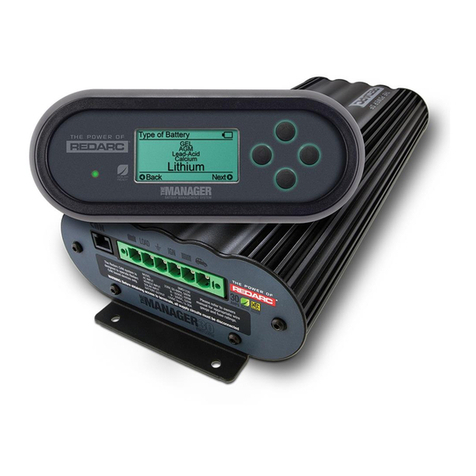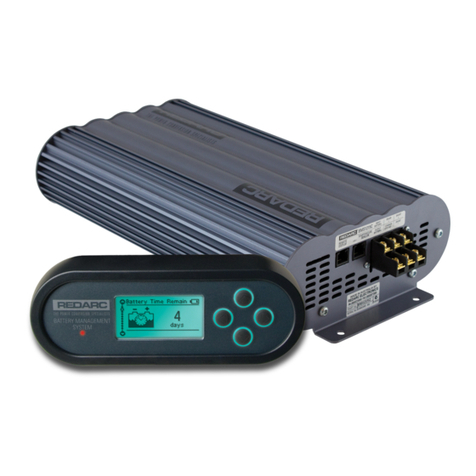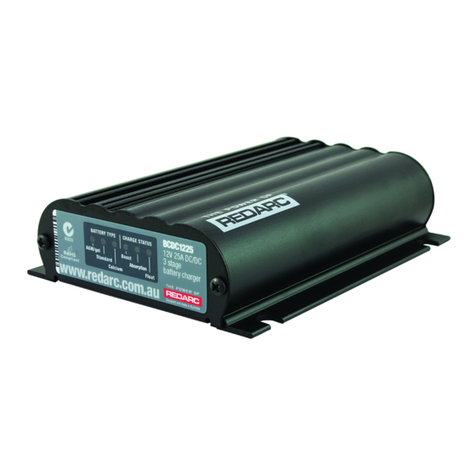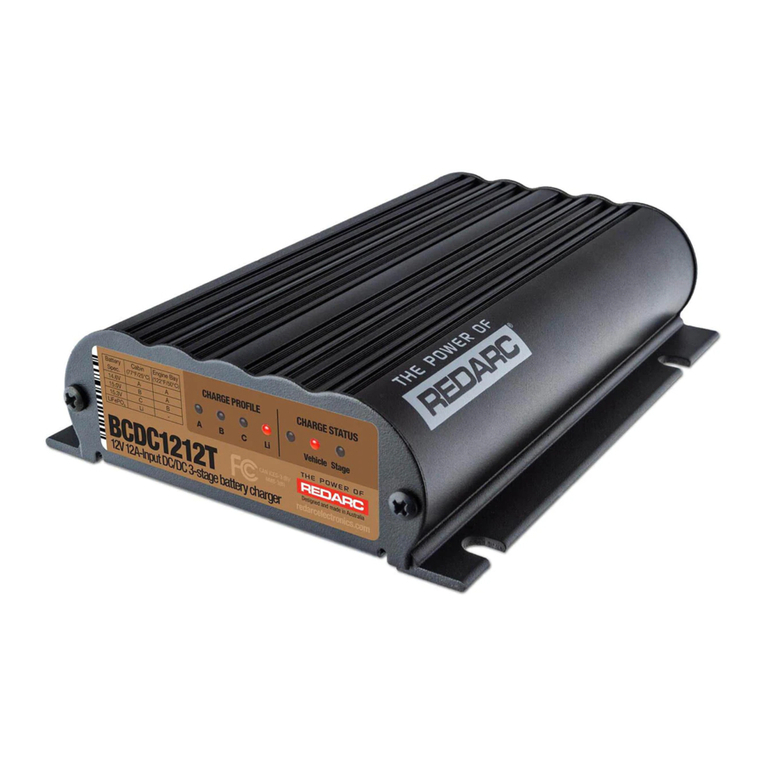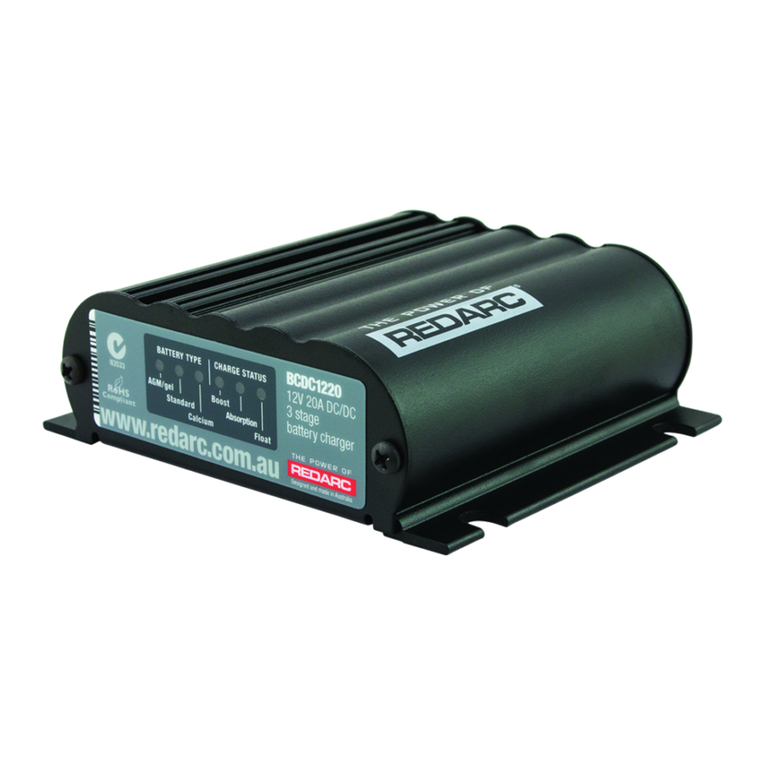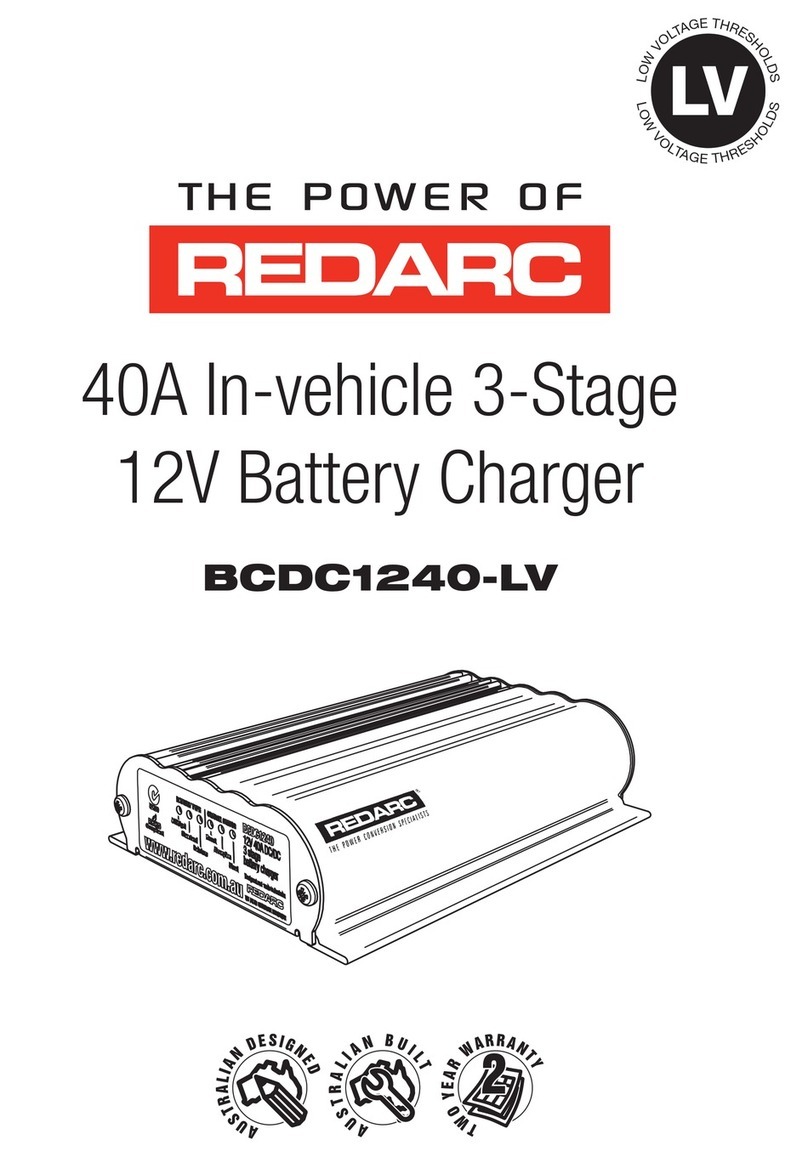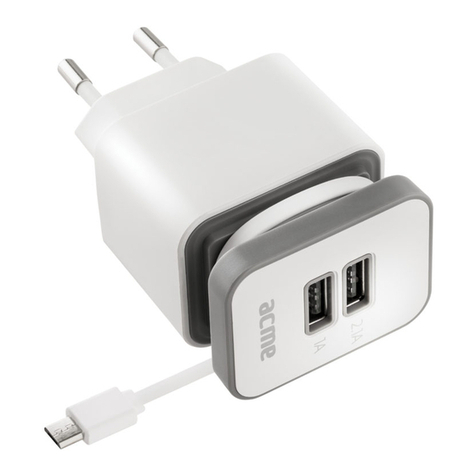
1
THE BCDC1250D
The BCDC1250D Dual Input In-vehicle Battery Chargers feature technology designed to charge
your auxiliary batteries to 100%, regardless of their type or size.
The Dual Input In-vehicle Battery Chargers also feature a Maximum Power Point Tracking (MPPT)
solar regulator. The unit will always take as much power from the unregulated Solar input as it
can before supplementing that power, up to the maximum rated output, from Vehicle power input.
The Dual Input In-vehicle Battery Chargers are suitable for all common types of automotive lead
acid batteries and LiFePO4lithium type batteries.
WARNING & SAFETY INSTRUCTIONS
SAVE THESE INSTRUCTIONS - THIS MANUAL CONTAINS IMPORTANT SAFETY INSTRUCTIONS FOR THE BCDC1250D
BATTERY CHARGER.
DO NOT OPERATE THE BATTERY CHARGER UNLESS YOU HAVE READ AND UNDERSTOOD THIS MANUAL AND THE
CHARGER IS INSTALLED AS PER THESE INSTALLATION INSTRUCTIONS. REDARC RECOMMENDS THAT THE CHARGER
BE INSTALLED BY A SUITABLY QUALIFIED PERSON.
RISK OF EXPLOSIVE GASES:
WORKING IN VICINITY OF A LEAD-ACID BATTERY IS DANGEROUS. BATTERIES GENERATE EXPLOSIVE GASES DURING
NORMAL OPERATION. FOR THIS REASON, IT IS OF UTMOST IMPORTANCE THAT YOU FOLLOW THE INSTRUCTIONS
WHEN INSTALLING AND USING THE CHARGER.
1. The Battery Charger should not be used by persons (including children) with reduced physical, sensory or mental
capabilities, or lack of experience and knowledge, unless they are supervised or have been instructed on how to use the
appliance by a person responsible for their safety. Children should be supervised to ensure that they do not play with
the Battery Charger.
2. Do NOT alter or disassemble the Battery Charger under any circumstances. All faulty units must be returned to REDARC
for repair. Incorrect handling or reassembly may result in a risk of electric shock or re and may void the unit warranty.
3. Only use the Battery Charger for charging Standard Automotive Lead Acid, Calcium Content, Gel, AGM, SLI, Deep Cycle or
Lithium Iron Phosphate type 12V batteries.
4. Check the manufacturer’s data for your battery and ensure that the ‘Maximum’ voltage of the prole you select does
not exceed the manufacturer’s recommended maximum charging voltage. If the ‘Maximum’ voltage is too high for your
battery type, please select another charging prole.
5. Check the manufacturer’s data for your battery and ensure that the ‘Continuous Current Rating’ of the charger does not
exceed the manufacturer’s recommended maximum charging current.
6. When using the Battery Charger to charge a Lithium Iron Phosphate battery, only batteries that feature an inbuilt battery
management system featuring inbuilt under and over voltage protection and cell balancing are suitable.
7. The Battery Charger is not intended to supply power to a low voltage electrical system other than to charge a battery.
8. Cable and fuse sizes are specied by various codes and standards which depend on the type of vehicle the Battery
Charger is installed into. Selecting the wrong cable or fuse size could result in harm to the installer or user and/or damage
to the Battery Charger or other equipment installed in the system. The installer is responsible for ensuring that the correct
cable and fuse sizes are used when installing this Battery Charger.
9. NEVER smoke or allow a spark or ame in vicinity of battery or engine. This may cause the battery to explode.
PERSONAL SAFETY PRECAUTIONS
10. To assist with the safe operation and use of the Battery Charger when connected to the battery:
a) Wear complete eye protection and clothing protection. Avoid touching eyes while working near a battery.
b) If battery acid contacts your skin or clothing, remove the affected clothing and wash the affected area of your skin
immediately with soap and water. If battery acid enters your eye, immediately ood the eye with running cold water for
at least 10 minutes and seek medical assistance immediately.
SAL.FOR.Instruction Manual.BCDC1250D – Version 5

